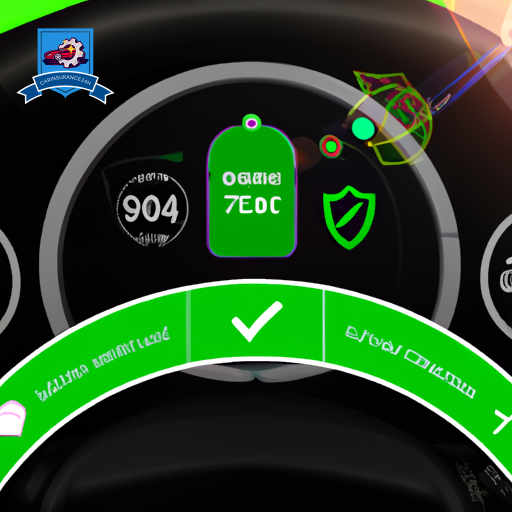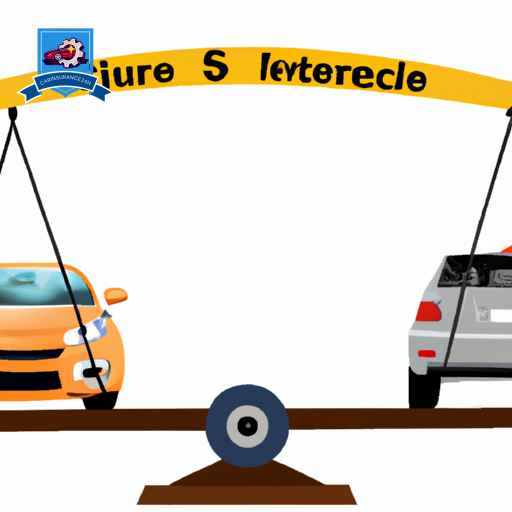In an era where technology seamlessly integrates into our daily lives, telematics-based insurance emerges as a paradigm shift, rewarding safe drivers with substantial discounts. This innovative approach utilizes sophisticated telematics devices to monitor driving behavior, offering a data-driven basis for adjusting insurance premiums.
As insurers increasingly adopt this model, questions about eligibility, data privacy, and the impact on insurance costs come to the forefront. The intricacies of how telematics works, coupled with its potential benefits and challenges, pave the way for a compelling discussion on its role in reshaping auto insurance policies.
To fully grasp the implications of telematics-based insurance discounts, it is essential to explore its mechanics and the broader effects on the insurance landscape.
Understanding Telematics

Telematics, an amalgamation of telecommunications and informatics, fundamentally revolutionizes the way vehicles communicate, offering a myriad of applications ranging from vehicle tracking to automated emergency calls. This technology has experienced a significant evolution, shifting from basic vehicle location services to sophisticated systems capable of monitoring driver behavior, vehicle health, and real-time traffic conditions. The evolution of telematics reflects a broader trend towards interconnectedness and data utilization, underpinning its growing significance in the automotive sector.
The impact of telematics on the industry cannot be overstated. It has not only enhanced vehicle safety and operational efficiency but also introduced new business models, particularly in the insurance sector. Insurance companies now leverage telematics data to assess risk more accurately, enabling the provision of personalized insurance policies. This paradigm shift towards usage-based insurance (UBI) models exemplifies how telematics data can create value for both insurers and insureds, promoting safer driving habits while potentially lowering insurance premiums.
Moreover, telematics has catalyzed advancements in fleet management, providing fleet operators with tools for monitoring vehicle location, fuel usage, and maintenance needs. This has resulted in optimized operations, reduced costs, and improved service delivery. The transformative effect of telematics extends beyond commercial applications, influencing regulatory frameworks and societal attitudes towards vehicle use and ownership.
How Telematics Works

Understanding the operational mechanics behind telematics provides valuable insight into its transformative impact on vehicle communication and management. Telematics systems amalgamate telecommunications and informatics to offer functionalities such as tracking and diagnostics by integrating with a vehicle’s onboard systems. This integration is pivotal for collecting and transmitting data, enabling a myriad of applications, from vehicle maintenance to insurance premium adjustments based on driving behavior.
The core of telematics operation revolves around:
- Vehicle Integration: Devices are installed in vehicles or utilize existing onboard diagnostic systems (OBD-II ports) to access important data points such as speed, location, and engine status.
- Data Collection: These devices gather data on driving behavior, vehicle health, and usage patterns.
- Network Protocols: Utilizing cellular, GPS, and other communication technologies, the collected data is transmitted securely to servers for processing.
- Analysis and Interpretation: Advanced algorithms analyze the transmitted data, offering insights into driver behavior, vehicle health, and more.
- Feedback Mechanism: Information, such as risky driving alerts or maintenance reminders, is relayed back to the driver or interested parties like insurance companies.
This intricate process hinges on the seamless integration of vehicle systems with telematics devices, underpinned by robust network protocols ensuring data accuracy and security. The precision in capturing and analyzing data allows for a thorough understanding of a vehicle’s operational aspects and the driver’s behavior, laying the groundwork for tailored insurance premium schemes based on actual driving patterns rather than statistical averages. This operational framework not only enhances vehicle management but also paves the way for innovative insurance models.
Benefits for Safe Drivers

Safe drivers stand to benefit greatly from telematics-based insurance discounts, which reward prudent driving behaviors with reduced premiums. This innovative approach to insurance underwriting allows for a more personalized assessment of risk, factoring in the unique driving patterns of each policyholder. By monitoring variables such as speed, braking habits, and time of day when driving occurs, insurers can accurately gauge an individual’s likelihood of filing a claim. Consequently, those who exhibit safe driving behaviors are often eligible for significant reductions in their insurance premiums, reflecting their lower risk profile.
The advantages of telematics extend beyond financial savings. The feedback provided by telematics systems can encourage drivers to adopt safer driving habits, contributing to a broader societal benefit of accident reduction. As drivers become more conscious of their driving style and its implications for safety and insurance costs, they are likely to make more responsible choices on the road. This behavior change can lead to a virtuous cycle where improved driving habits result in fewer accidents, which in turn supports the case for lower insurance premiums for safe drivers.
Additionally, the data collected through telematics enables insurance companies to develop more nuanced risk models. This enhanced understanding of risk factors associated with accidents can inform targeted interventions and educational programs aimed at further reducing the likelihood of accidents among policyholders. Ultimately, telematics-based insurance discounts serve as a powerful incentive for safe driving, aligning the interests of insurers and policyholders in promoting road safety and making insurance more equitable.
Eligibility Criteria

Eligibility criteria for telematics-based insurance discounts typically involve a detailed assessment of driving behaviors through the monitoring of vehicle usage patterns. Insurance providers set forth specific requirements that policyholders must meet to qualify for discounts, ensuring that only the safest drivers benefit from reduced premiums. These criteria are designed to objectively evaluate the risk associated with insuring a particular driver, based on real-time data collected from their vehicle. Understanding these eligibility requirements is important for drivers seeking to lower their insurance costs through responsible driving practices.
The key eligibility criteria include:
- Consent to Telematics Device Installation: Drivers must agree to have a telematics device installed in their vehicle, allowing the insurance company to monitor driving behavior.
- Clean Driving Record: A history of safe driving, free from major traffic violations, is typically required to qualify for discounts.
- Minimum Driving Experience: Some insurers specify a minimum amount of driving experience to ensure the driver has a proven track record of safe driving.
- Compliance with Coverage Limits: Policyholders must adhere to the coverage limits specified by their insurance policy, including any restrictions on vehicle usage.
- Agreement to Policy Duration: Drivers need to commit to the duration of the policy term, which often includes a trial period during which driving data is collected and analyzed.
Adhering to these criteria not only makes drivers eligible for significant savings on their insurance premiums but also promotes safer driving habits. By closely monitoring and evaluating driving behaviors, telematics-based insurance encourages policyholders to maintain high standards of road safety.
Installation Process

From the eligibility criteria, the installation process of telematics devices emerges as a pivotal aspect in securing insurance discounts. This section will elucidate the sequential steps required for device setup, ensuring clarity and ease for users.
Additionally, it will address the paramount issue of privacy concerns, offering insights into how personal data is safeguarded.
Device Setup Steps
To initiate the installation process of a telematics device, users must first verify that their vehicle is compatible with the system’s requirements. Ensuring device compatibility is paramount to a smooth setup. Should any issues arise, troubleshooting tips provided by the device manufacturer can be invaluable.
The setup process typically involves:
- Reading the manufacturer’s installation guide to understand the specific steps required.
- Locating the OBD-II port in the vehicle, usually found under the dashboard.
- Connecting the telematics device to the OBD-II port.
- Configuring the device through a mobile app or web interface, following the setup instructions.
- Testing the device to confirm it is correctly transmitting data.
This systematic approach guarantees a successful installation, paving the way for potential insurance discounts through safe driving monitoring.
Privacy Concerns Addressed
Amid growing concerns regarding data privacy, it is essential for users to understand how telematics devices handle their personal information during the installation process.
The installation phase is critical as it involves the initial collection of data, which is then used for evaluating driving behavior and determining insurance discounts.
To address privacy concerns, insurance companies elucidate their policies on data monetization, ensuring users that their data is not sold or misused for purposes beyond premium calculation.
Users are provided with clear guidelines on how to withdraw consent for data collection, allowing them to maintain control over their personal information.
This transparency in the consent withdrawal process and the stringent measures against data monetization are pivotal in safeguarding user privacy during the installation of telematics devices.
Privacy and Data Security

As we shift from the installation process to the critical examination of privacy and data security concerns in telematics-based insurance discounts, it becomes imperative to evaluate the data handling practices employed.
The protection of user privacy is paramount, necessitating robust measures to mitigate potential security breach risks. This discussion will therefore focus on the mechanisms in place to secure sensitive information and uphold the privacy of the insured.
Data Handling Practices
In the domain of telematics-based insurance discounts, stringent data handling practices are paramount to ensuring privacy and data security for all stakeholders. The emergence of sophisticated data breaches has necessitated the adoption of advanced encryption methods. These efforts are designed to safeguard sensitive information against unauthorized access and misuse. To maintain the highest levels of data integrity and confidentiality, the following practices are rigorously implemented:
- Regular security audits to identify vulnerabilities.
- Cutting-edge encryption methods to protect data in transit and at rest.
- Stringent access controls to limit data exposure.
- Thorough data privacy policies that comply with legal standards.
- Ongoing staff training on data security protocols.
These measures collectively form a robust framework for the secure handling of personal driving data, ensuring trust between insurers and policyholders.
Protecting User Privacy
To safeguard the privacy of users in telematics-based insurance schemes, thorough privacy and data security measures are imperative. In that regard, data encryption emerges as a fundamental tool. By encoding personal information, data encryption guarantees that even in the event of unauthorized access, the information remains unintelligible and secure.
Additionally, the deployment of anonymization techniques plays an important role. These techniques modify personal data in such a way that the individual’s identity cannot be ascertained without the use of additional information, which is kept separately and securely.
Together, data encryption and anonymization techniques form a robust defense against potential privacy infringements, protecting sensitive user information from exploitation and maintaining the integrity of telematics-based insurance discounts.
Security Breach Risks
Despite the implementation of advanced data protection measures, telematics-based insurance schemes remain vulnerable to security breaches that pose significant risks to privacy and data security. The potential for unauthorized access by external hackers raises serious concerns, highlighting the intricate balance between leveraging technology for insurance benefits and safeguarding sensitive user information.
The following points outline the core vulnerabilities and their implications:
- Potential unauthorized access to personal driving data by external hackers.
- Risk of sensitive personal information theft.
- Possibility of data manipulation, affecting premiums unjustly.
- Legal and reputational repercussions for insurance providers.
- Thorough policy implications, necessitating robust security protocols.
These vulnerabilities underscore the critical need for continuous enhancement of security measures to protect against breaches, ensuring the integrity of telematics-based insurance programs and safeguarding user privacy.
Monitoring Your Driving Behavior

Monitoring your driving behavior through telematics technology plays an important role in determining eligibility for insurance discounts. This technology allows insurers to gather data on your driving habits, including adherence to speed limits, which is essential for evaluating risk and offering tailored discounts. By analyzing this data, insurance companies can identify drivers who exhibit safe driving behaviors, rewarding them with reduced premiums.
The adoption of telematics technology for monitoring driving behavior introduces a dynamic approach to insurance pricing. This method contrasts with traditional models, which often rely on static factors such as age, vehicle type, and historical accident data. With real-time data, insurers can gain a more accurate understanding of an individual’s driving patterns, leading to more personalized insurance rates.
| Aspect of Driving Behavior | Impact on Insurance Discounts | Telematics Data Utilization |
|---|---|---|
| Adherence to Speed Limits | Direct correlation with lower risk and potentially higher discounts | Continuous monitoring and analysis |
| Frequency of Hard Braking | Indicator of aggressive driving, affecting discount eligibility | Real-time data collection and evaluation |
| Time of Day Driven | Driving at high-risk times can affect rates; safer times may lead to discounts | Evaluation of driving patterns over time |
This table illustrates how different aspects of monitored driving behavior can influence the insurance discounts offered to drivers. It underscores the importance of maintaining safe driving habits, such as observing speed limits and avoiding aggressive maneuvers, to maximize potential savings. While telematics-based insurance offers a novel way to reward safe drivers, it is essential for policyholders to understand how their driving behavior directly impacts their insurance costs.
Maximizing Your Discounts

Understanding the intricate relationship between your driving habits and telematics data is important for maximizing insurance discounts. Telematics technology enables insurers to monitor driving behaviors in real-time, providing a basis for personalized insurance premiums. By analyzing the collected data, insurers can identify safe driving patterns and offer discounts accordingly. However, achieving the maximum possible discount requires a proactive approach and a deep understanding of the discount factors considered by insurers.
To enhance your potential savings, consider the following key strategies:
- Maintain a Consistent Safe Driving Record: Safe driving over time is one of the most important factors. Avoid speeding, hard braking, and other risky behaviors.
- Drive Less: Lower mileage can lead to higher discounts. If possible, limit your vehicle usage.
- Utilize Feedback: Many telematics programs provide feedback on your driving. Use this information to improve your driving habits.
- Understand the Data Collected: Knowing what data your insurer collects and how it impacts your discount can guide you in making beneficial changes.
- Avoid Policy Cancellation: Make sure your policy remains in good standing. Cancellations may lead to a loss of accumulated benefits and may impact future discount eligibility.
Maximizing your discounts through telematics-based insurance not only involves adhering to safe driving practices but also requires an understanding of how insurers assess risk and reward. By focusing on the key discount factors and avoiding actions that could lead to policy cancellation, drivers can reduce their insurance premiums while contributing to safer roads for everyone.
Switching to Telematics Insurance

Having explored how telematics can enhance insurance discounts through safe driving practices, it is important to contemplate the process and benefits of changing to telematics insurance. This shift involves a thorough evaluation of one’s current insurance policy, a clear understanding of potential rate increases, and the strategic timing of policy cancellation to optimize cost savings.
Changing to telematics insurance necessitates a proactive approach to policy management. Policyholders must first assess their existing contracts for any clauses that could affect the switch, particularly those pertaining to early termination fees or penalties. Awareness of these conditions is essential to avoid unexpected financial burdens. Additionally, individuals should meticulously evaluate the telematics offerings across different insurance providers. This comparison should not only focus on the potential discounts but also consider the implications of rate increases based on driving behavior monitored through telematics.
Effective communication with the current insurance provider is pivotal. Policyholders should inquire about the process for policy cancellation, ensuring they understand the necessary steps and the best timing to avoid lapses in coverage. Changing to a telematics-based policy often involves installing a device in the vehicle or downloading a smartphone app that tracks driving habits. Hence, it is advisable to coordinate the activation of the telematics service with the cancellation of the existing policy to maintain continuous insurance coverage.
Frequently Asked Questions
Are There Any Geographical Limitations to Where Telematics-Based Insurance Discounts Can Be Applied, Such as Rural Versus Urban Areas?
Exploring the landscape of insurance, telematics technology knows no bounds, yet coverage availability may vary, influenced by installation challenges in certain locales, bridging urban expanses and rural retreats without clear geographical limitations to its application.
How Does Changing Vehicles Affect My Telematics-Based Insurance Policy and Associated Discounts?
Verifying vehicles may impact your telematics-based insurance policy due to vehicle compatibility and privacy concerns. Validate the new vehicle supports telematics technology and comprehend any alterations in data collection that may affect your discounts.
Can Telematics Data Be Used for Purposes Other Than Calculating Insurance Discounts, Such as in Legal Situations or by Law Enforcement?
Telematics data can indeed extend beyond insurance calculations, potentially serving in legal disputes or for law enforcement purposes. However, data privacy and ethical concerns necessitate stringent regulations to govern such applications, ensuring users’ rights are protected.
Are There Any Specific Driving Conditions, Like Weather or Traffic Congestion, Under Which Telematics Devices May Not Accurately Track Driving Behavior?
Telematics devices may experience reduced reliability under specific driving conditions, such as severe weather or heavy traffic congestion, due to potential signal interference. These factors can impact the accuracy of tracking driving behavior.
How Do Telematics-Based Discounts Compare Financially to Traditional Safe Driver Discounts Over the Long Term?
Financially, over the long term, discounts based on technology-assisted driving assessments potentially offer more substantial savings compared to traditional methods. However, privacy concerns and a thorough cost analysis should be considered by policyholders.










